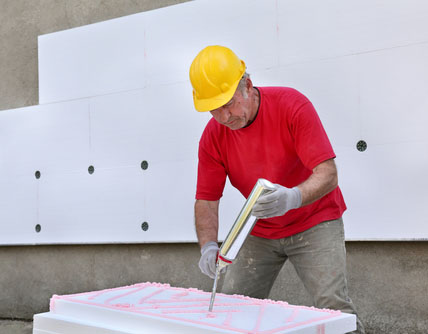Well I don’t know what the weather has been like in your neck of the woods but down in the Southwest we have taken a hammering from repeated low pressure systems. It’s been sheeting it down. And very windy too. Happy New Year!
Plugging the Gap
In an effort to keep the rain out of my workshop I’ve used an expanding foam gap filler to plug the gaps at the bottom of the external door frame which has become quite rotten.

The filler that I used is a standard DIY product bought from a local store. If you haven’t see one before it’s a pressurised can; you squeeze the trigger; foam comes out and then expands into the gap. After an hour or two the foam sets hard all the way through and can be cut or sanded if necessary.

The safety info on the can is pretty standard health and safety stuff. But there was a lot of it. Of particular note is the warning about respiratory sensitisation.

The safety data sheet for the product can be found here. It reveals a lot more information.
Isocyanates
One of the main components of the foam is polymethylene polyphenyl isocyanate. This is an isocyanate i.e. an organic compound with a C=N=O group attached (i.e. a carbon, nitrogen and oxygen atom bonded together).
And just to explain, “cyanide” is not an element; it is a compound containing a carbon and nitrogen atom bonded together (C=N).
There are various different types of isocyanates such as methylene diphenyl di-isocyanate or MDI. MDI is used in the manufacture of various rigid foams such as polyurethane insulating board and spray foams used in the construction sector on a large scale basis to spray insulating, sound proofing or fire retardant foams onto large surface areas. And toluene di-isocyanate (TDI) which is used in the manufacture of soft foams, such as those used in upholstery and mattresses, and hexamethylene di-isocanate (HDI) which is use for specialist finish paint spraying.
MDI is the most commonly used form (by global production figures).
Isocyanates are also used in hard wearing paint, in particular sprayed paint coatings (often referred to as ‘two-pack’ paints) such as those used in the automotive industry.
Health Risks
Unfortunately isocyanates come with some very significant health risks. See the safety data sheet for the full range. Arguably the most significant of which is that they are powerful respiratory sensitisers. Exposure to isocyanates can cause an unsensitised, non-asthmatic person to become sensitised and develop asthma. See here for an introductory video from WorkSafe BC. In fact isocyanate paint spraying is the primary cause of occupational asthma in the UK (see here).
Once sensitised, exposure to very small amounts of isocyanate can then trigger an asthma attack (in theory a single molecule of the allergen is all it takes). Any of you that have either experienced an asthma attack or seen someone else endure one will know that these attacks are very unpleasant and can prove life-threatening. The respiratory airways constrict as the smooth muscle that forms the airways’ walls contracts and the lining of the airways produces excessive amounts of mucus which restricts breathing further.
If you want to see what a life-threatening asthma attack looks like in reality then Asthma UK have posted a video (originally from Australia). See here.
Alternatively for a more measured view of the impact of occupational asthma on a UK worker take a look at this excellent HSE video.
Anyone who is already asthmatic is far more at risk compared to a non-asthmatic person.
Control
Isocyanates are subject to the Control of Substances Hazardous to Health Regulations and inevitably have Workplace Exposure Limits (WELs) that are set out in the HSE publication EH40 (see here). The long term exposure limit (the eight hour time weighted average limit) for all isocyanate (except MDI) is 0.02 mg/m3 and the short term exposure limit (the 15 minute time weighted average exposure limit) is 0.07 mg/m3. Compared to other asthmagens such as flour dust and wood dust (with LTELs of 10 mg/m3) these values are very low.
As you might imagine the emphasis is on the eliminating exposure. For an example of this check out this BMW production line video that shows the total automation of the paint process. Not a human in sight. Where elimination of exposure cannot be practised then reducing exposure to the lowest level that is reasonably practicable is necessary. With a heavy emphasis on engineering controls such as local exhaust ventilation systems (LEV). In vehicle repair shops this ideally comes in the form of a spray booth (see here). Personal protective equipment also has a part to play to reduce both the inhalation risk and skin contact (since isocyanates can cause skin inflammation and sensitisation).
Further info
The HSE website has a wealth of information about isocyanates, occupational asthma and occupational exposure and control methods.
See here for info on isocyanates in the construction sector.
Here for general info on occupational asthma.
And here for info on paint spraying in the automotive industry.
The HSE website even has some videos showing paint spraying in an LEV booth with real-time isocyanate concentration displayed on screen during the spraying operation (see here). Wow, how cool is that! And booth clearance times, etc. (see here).
It really is a fantastic resource for anyone who is the least bit curious.
–
Dr Jim Phelpstead BSc, PhD, CMIOSH

